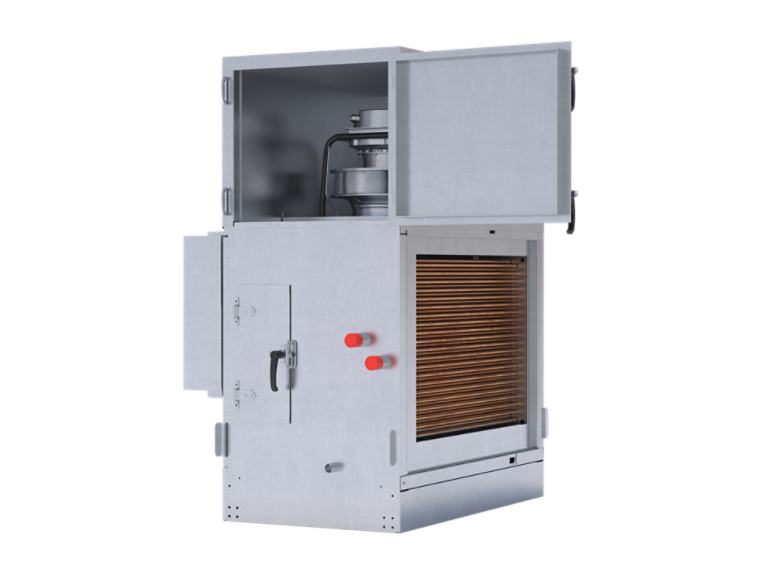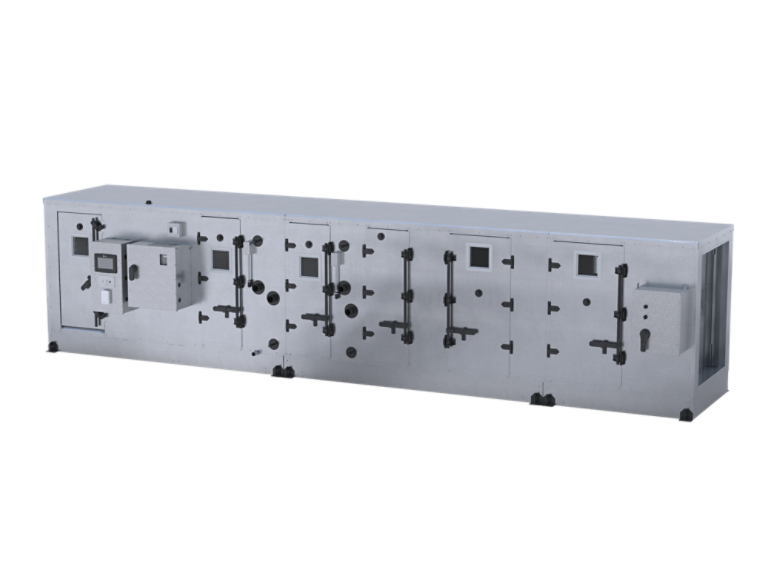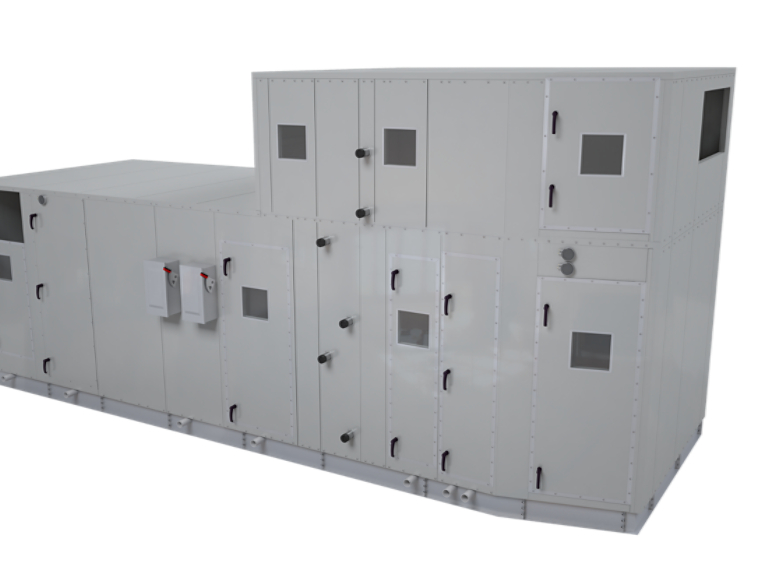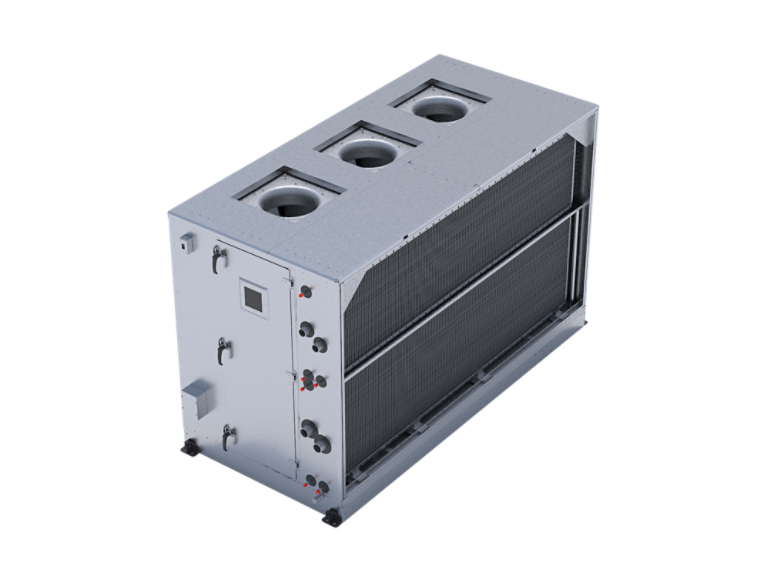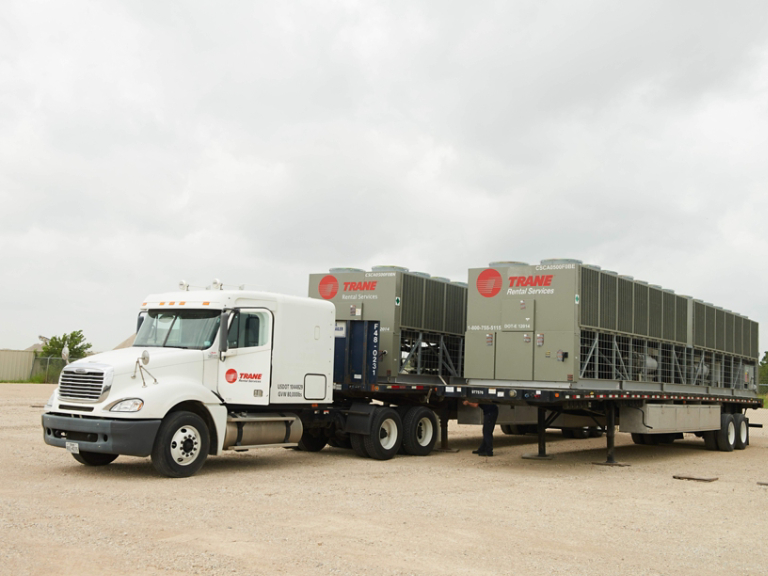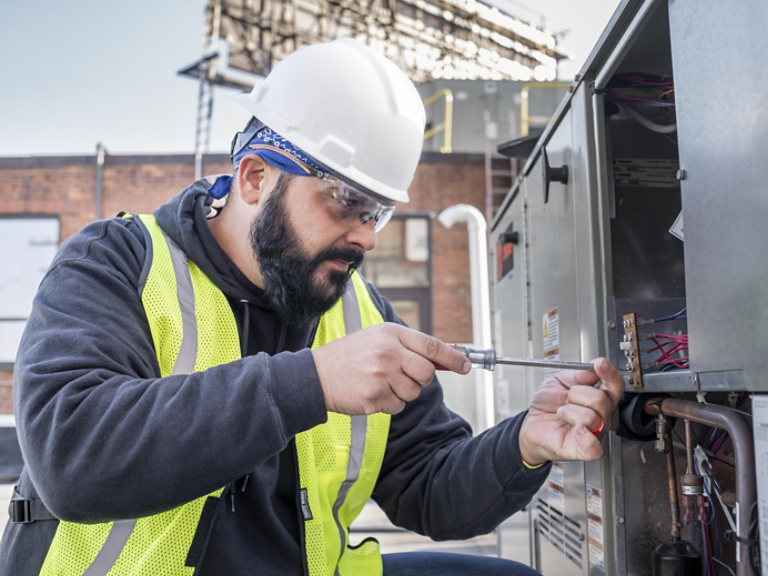In simplest terms, an air handler moves air. The simplest air handler consists of a filter, fan, motor, and coil.
Air handlers are usually sized based on the amount of cubic airflow that is moved through the unit (Cubic Feet per Minute – CFM). Air handlers can range in size from 200 cfm up to 150,000 cfm.
As air handlers get more complex, different features are added to the unit to help solve application problems in the building. Typical application solutions include humidity control, higher efficiency, quiet acoustics, improved Indoor Air Quality (IAQ) and improved comfort control.

